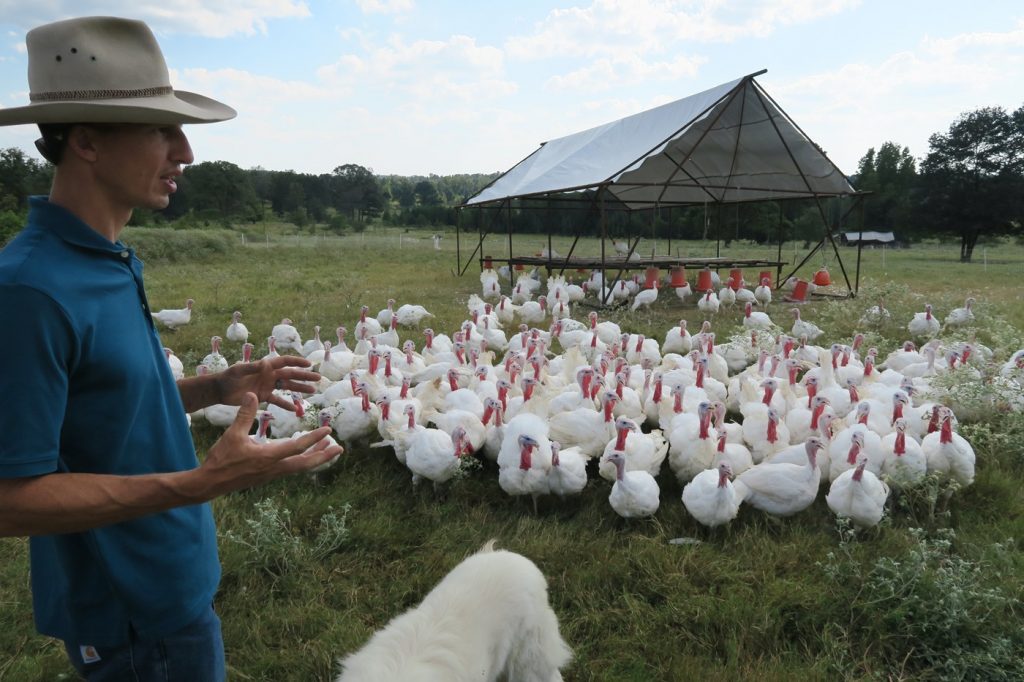Three Simple Ways to Eat Healthier in the New Year
Now’s the time, right? You’re sick of sweets and ready and motivated to eat better. Don’t get overwhelmed by the elaborate meal plans and complicated recipes one sees “out there” these days. Don’t go crazy trashing everything in your pantry and fridge and leaving the family hungry and tempted to grab a pizza on the way home.
Instead, gently move toward a better way of eating healthy foods regularly. And if you’re anything like me, if you’re going to do something regularly, it has to be pretty simple.
Here are 3 really simple (and delicious!) ways to eat healthier in 2018:
- Eat real food for breakfast.
- Make bone broth.
- Use your crockpot wisely.
Eat Real Food for Breakfast
I wrote last month about a perfect breakfast food: Smoked Ham Steak. I called it this not because there’s nothing “healthier” out there that a person could eat for breakfast, but because sometimes something really tasty but still really good for you, all the while being really easy to incorporate in a fast-paced lifestyle… those criteria are what make a good food great. If “healthy food” requires so much work, planning, and supplemental ingredients that we end up saving it for when we “have time”… that’s just not sustainable, and we’re going to fall right back into the processed-food rut. Why? Because it’s easier.
But I’m convinced that homemade food doesn’t have to be difficult. I DO think it’s best to approach it with baby-steps, and that’s why I’m writing this article.
So now that the holidays are behind us and the last of the Christmas cookies, candies, and pie are eaten up, we’re all thinking about how much we want to start our new year out making good food choices and instituting new, healthier routines. May I just remind you to be sure that they are doable routines?
Here’s a very doable breakfast item that I would encourage you to incorporate at least once a week. It’s done in less than 10 minutes with no extra ingredients required. And it’s on sale this month, just in time for our January deliveries! Add Ham Steak to the menu!
Make Bone Broth
I can’t tell you how many food bloggers and recipe sites I’ve come across that just make broth too complicated, and they intimidate perfectly capable people out of making this nourishing and delicious food.
There is no “right way” to do broth. But a definite wrong way to do it is not to do it at all! Now you have no reason not too—we’ve got chicken soup bones back in stock, and beef soup bones are on sale for half price this month. Read my Broth Tutorial to learn how very simple and no-nonsense broth-making actually is.
So what do you do with this broth? Well, one really easy way to use it during cold weather, is to make soup! The simplest soup I know of is French Onion Soup. Are you ready for the recipe? It’s a 3-liner: Thinly slice a large yellow onion, then sauté it in a saucepan over medium heat in a few tablespoons of butter or lard. Once the onions are soft and translucent (about 5 minutes), pour in 2-4 cups of prepared homemade beef broth. Add salt and pepper to taste. That’s it! You will not believe how delicious and simple this is. Go for it!
Use Your Crock-pot Wisely
What do I mean by wisely? Well, for one, you’ll need to thaw the meat the night before you set this up, so add that to your evening routine. That’s probably the hardest part of this healthy-eating strategy! But I’ve even been known to cook a partially frozen roast if I forget to take it out the day before. The texture will be nicer if the meat can be allowed to do a slow thaw, but in a pinch, frozen works, too. For mostly-frozen roasts, just plan for some extra cook time, and add a touch of liquid at the beginning of cooking.
But I think a bigger issue than remembering-to-thaw-the-meat is when people assume that recipes have to be super-elaborate to be tasty. Again, if a mile-long list of ingredients is holding you back from real home cooking, you’re doing something wrong. You don’t need exotic spices to make a good meal. When you use good meats, their flavor is brought out by a good sea salt and appropriate cooking time. That’s all you really need.
My favorite way to make a crockpot roast is to take either a beef chuck roast or a pork shoulder roast and place it at the bottom of the crock. Sprinkle it with salt, then add whatever veggies you like: potatoes, carrots, celery, onions, garlic. You can even mix it up and use rutabaga, turnips, cabbage, peppers, or sauerkraut! If you prefer a soupier roast, add a little homemade broth or water. You could even add beer or wine! I do not usually add any liquid, as the roast will produce plenty of liquid on its own. Fit the lid on snugly, then turn it on low and cook for 6-8 hours.
That’s it!
Don’t add cans of cola or cream-of-chemical soup. You don’t need Italian seasoning mix or meat tenderizer powder (MSG, anyone?). Just let the meat be delicious because of the clean way it was raised.
Recap!
- Eat real food for breakfast.
- Make bone broth.
- Use your crockpot wisely.
I hope these 3 strategies will help you include more real food in the coming year. Happy, Healthy Eating!
–Jerica
















